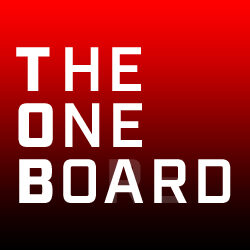This installment of The One Board originally appeared in Bowlers Journal International, May, 2023
In all debates on all topics in all areas of the world, there is none more compelling or consequential to society than the appropriate field size for a bowling tournament. How many entries is enough? How many entries is too many? Is there more prestige winning an eight-person tournament when the competitors are eight best in the world or is it more fulfilling to win a tournament over six thousand bowlers of extremely varying skill levels?
As of this writing, the USBC Masters recently concluded with Anthony Simonsen outlasting 389 other bowlers to claim the title. It was Simonsen’s third USBC Masters title and fifth major. The other 389 players will need to wait for their next chance. For many, that will be next year as no other event on the schedule even comes close to approaching the consideration of possibly almost reaching such a huge number of entries.
Some say every event should have 390 players. Some say no events should have 390 players. Some say 390 isn’t enough; open up the entries, add a D squad. E Squad. Use the Khmer alphabet if necessary. Some say 390 is about right, but only if you have the “correct” 390 as someone on the waiting list may have been able to take down Simonsen whereas entrant 390 didn’t stand a chance. Yes, maybe. Probably not.
It was Simonsen’s second title of the season. He also won the PBA Wichita Classic, part of the five-event Classic Series that featured 64-player fields. EJ Tackett has three titles this season, winning the U.S. Open and two Classic Series events. Jason Belmonte won the other major, the PBA Tournament of Champions, which was another 64-player contest, this one featuring only national champions as well as some regional champions who got through the PTQ.
How is it possible that Simonsen, Tackett and Belmonte have combined to win six of the first eight events of the season? No matter whether there were 108 entries (U.S. Open including 21 from the PTQ), 64 entries or 390 entries, it seems like some players tend to do better than others.
Bowling has always struggled with admitting some players are better than others. In baseball, sometimes a career .220 hitter will go 4-4 one night against Max Scherzer, and yes, maybe a bowler who forgot to sign up for a tournament only to claim he would’ve beaten Anthony Simonsen might actually have beaten Anthony Simonsen, but in reality, Scherzer is probably going to get that guy out next time and Simonsen is probably not going to be defeated by someone who failed to enter the tournament. It’s also worth considering the hypothetical .220 hitter is still a Major League Baseball player, whereas more than 300 of the 390 Masters competitors are not full-time professional bowlers.
Obviously, in bowling, there are anomalies, and in a one-game match, anyone stands a chance against even the likes of Simonsen, Tackett and Belmonte. But we’re talking about winning here, and that’s not the argument of the huge-field proponents. To them, it’s not about who wins; it’s about who cashes. More people should be paid to bowl. As many bowlers as possible should get paychecks, even though the more spots that pay, the lower the pay is for everyone.
The counterargument is fewer people should be paid to bowl. Only the most elite among them should get paid—and paid well—to represent the highest levels of the sport. What’s the right answer? 390? Simonsen won. 64? Simonsen won.
Let eight players in or let a thousand in. Chances are, one of the guys from that hypothetical field of eight is going to win in either case. Not all the time, but often. Does that matter? Does bowling know what it wants? Or do we simply want whatever we don’t have at any given moment?

